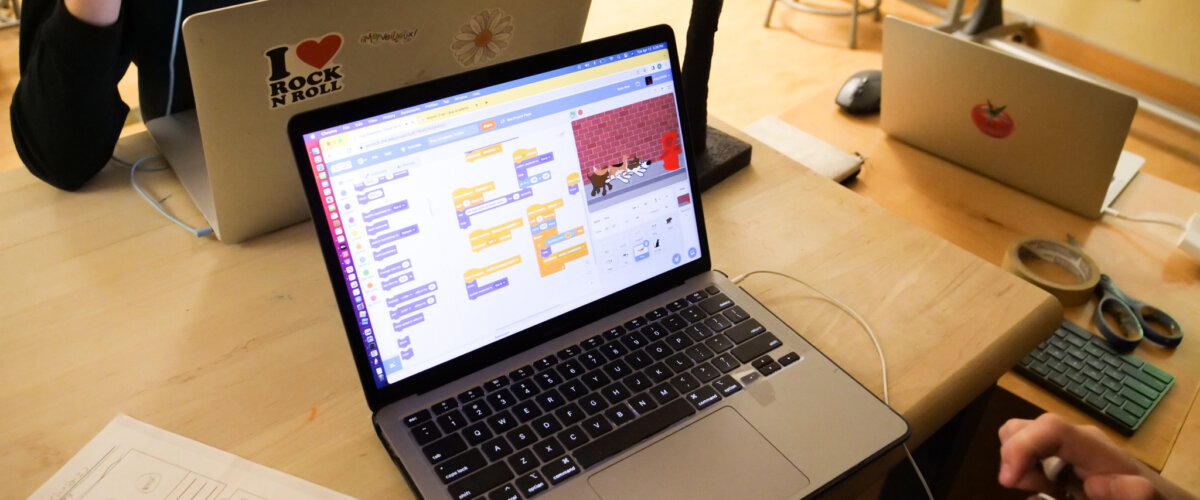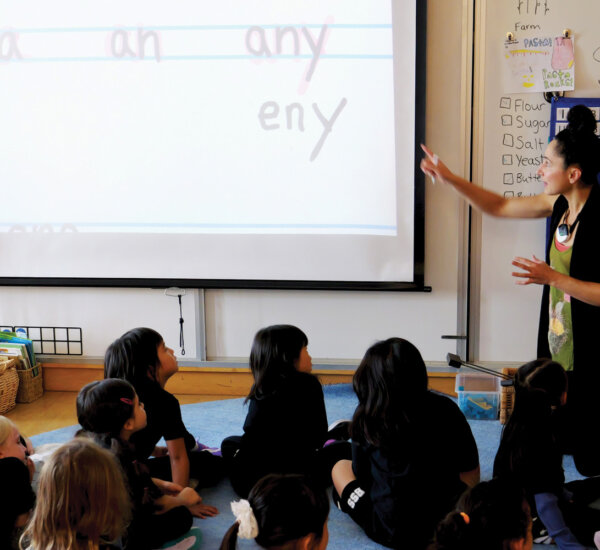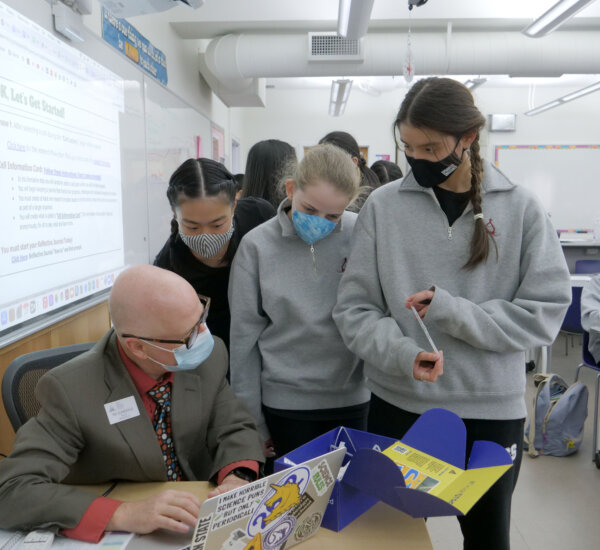Grade 5 and 6 music students integrated their knowledge of sound with new technology skills in coding and video editing to create trailers for their favourite books, shows and movies.
Students explored how music and sound is used to influence viewers’ emotions and how to combine that knowledge with media technologies to produce an original audio-visual work during their year-end project.
Dr. Laura Fitzpatrick taught her students how to use a computer program called GarageBand to edit and mix music. Students discovered how they could layer sounds and the impact that silence can play in a musical work. She says that using technology to create songs allows students to tailor their projects based on their musical backgrounds and experiences. “A student who has had violin lessons since the age of three is probably going to want to go in a very different direction than someone who has never studied an instrument and is just learning theory for the first time,” explains Dr. Fitzpatrick.
This project gave students an opportunity to integrate the creative process with the critical analysis skills that they developed throughout the year. For instance, students considered how emotions can be communicated to an audience through musical elements such as tempo, rhythm, timbre and tone. Students also built on their previous learning of instrument families and songwriting from earlier units when layering sounds together to create their compositions.
Students learned how to use a computer program called Scratch to create animations using block-based code. They explored how to sequence instructions so as to achieve their creative visions. “Scratch is designed so well. It’s really intuitive,” explains Design Technology Technician Ms. Jordanne Chan. On the left side of their screens, students click and drag colour-coded directions that conduct the audio and visual elements of the video that they see on the right. “All the principles and logic are very transferable,” adds Ms. Chan. “When you do text-based coding as a kid, it can be as simple as forgetting a semicolon and your code won’t run. So, this program takes away a lot of the frustration and barriers for learners.” JavaScript is one example of a programming language that uses a more complex version of the logic students are introduced to through Scratch.
Within the programming software, students imported music (their GarageBand compositions or songs that corresponded with their trailer’s theme), images and sounds. They then created instructions to make their creative visions come alive. Some instructions included animating, looping (repetition), adding narration and sound effects.
After mastering Scratch, the classes welcomed Technology Integration Specialist Ms. Marisa Hoskins to teach them how to use iMovie. Within this program, students learned an alternative software and method to produce their trailers. Rather than block-based coding, students discovered how to edit a trailer through a comprehensive interface, similar to the technologies used by film editors. Students learned how to clip, loop, and apply special effects to their sounds and visuals. “The students found some of the editing techniques initially challenging, such as learning to detach an audio clip from a video,” says Ms. Hoskins. “But, they caught on quickly. A big part of the learning in this project was staying calm, problem-solving and troubleshooting. It was impressive to see how students developed confidence in their competency in using iMovie throughout this process.”
At last, it was time for students to decide whether they would like to create their trailer using Scratch or iMovie. Each student had the choice to use the program that would best achieve their creative visions. In the end, this culminating activity introduced a wide range of technological skills that students can build upon as they pursue future interests in composition, computer programming or video production.



